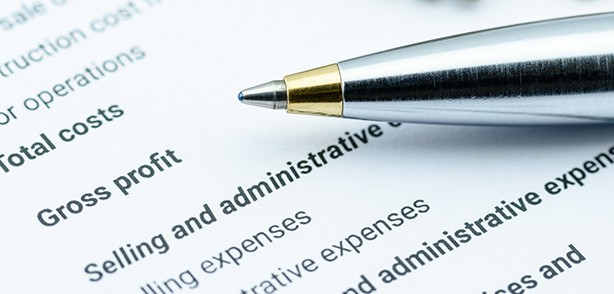9 Methods to Increase Cash Flow for Small Businesses

If you're a small business owner with a growing business, you're likely doing things right. If your profits are increasing year over year, you're probably moving in the correct direction. However, one of the most significant errors that small businesses make at this point is complacency.
Even companies that are growing can experience cash flow issues. These problems strike when financial, investing, or operational activities aren’t performing optimally.
For example, sometimes payables are due before receivables come in; ergo debts must be paid before revenues are recognized. When this happens, you’ll inevitably face cash flow issues in your small business.
As a catalyst, then bills won’t be paid on-time, which can affect your business credit score, the ability to secure additional working capital, and general financial health.
The Top 9 Ways to Improve Cash Flow
Increasing your business’s monthly cash flow may seem like a big undertaking. However, you might be surprised at how simple shifts in operations can significantly impact your business cash flow in the short term and long term.
If you'd like to increase your small business’ cash flow, it may be time to consider the strategies outlined below.
1. Increase the Prices for Goods or Services
Many business owners worry that if they increase the price of their goods or services, they'll alienate loyal customers.
However, it's important to experiment with pricing fluctuations. By doing this, you can come to the ideal number. The goal is to determine how much your customers are willing to pay before sales begin to slow.
2. Utilize a High-Interest Savings Account
Utilizing high-interest savings accounts will provide small businesses with liquidity while also working to improve overall cash flow. Many banks offer accounts that earn interest with minimum requirements of balance. In both business savings and money market accounts, interest rates will be higher than standard accounts.
3. Use Electronic Payment Systems to Improve Cash Flow
If you submit electronic payments to vendors, your business can wait until the morning of a bill’s due date to make a payment. This delay in payment (without being late on a payment) will work to greatly improve cash flow.
In addition, business credit cards sometimes provide grace periods that can last for weeks. This can also do a good bit to increase the cash flow of your small business. In fact, you can obtain some solid rewards by paying with a business credit card! However, it’s crucial to not obtain too much debt before paying it off.
4. Immediate and Automated Sending of Invoices
By sending invoices to anyone who owes you money for products or services immediately, you reduce the delay that commonly occurs in invoicing.
With digital services like Flint and SquareUp that automatically send out invoices, you’re going to typically receive payment days faster than conventional methods. There are many pieces of accounting software that do this as well.
5. Improve Your Inventory
It may be time to monitor the inventory that your business has in stock. Goods that aren’t sold in a timely manner can lead to cash flow problems for your business.
Instead of purchasing more items that aren’t going to sell, it may be best to make markdowns to existing inventory. We know it’s difficult to cut down on inventory options. However, it’ll be better for your bottom line to try and sell what’s left of this inventory, and then focus on other inventory options in the future.
If you’re looking to earn extra cash flow for your small business, you need to drop emotions and be objective with your inventory.
6. Form Buying Cooperatives
Power comes in strong numbers. If you can find some fellow business owners who are like-minded and looking to pool cash reserves to negotiate bulk pricing from suppliers, it is recommended that you do so.
Typically, suppliers will provide significant discounts to larger firms or buying cooperatives who plan to purchase in bulk.
7. Conduct Credit Checks for Customers
In some cases, customers may not want to pay for purchases with cash. Or, their cash balances may be low, making it easier to pay with credit card or another form of payment.
If they are one-time customers and are looking to pay for a product or service with a credit card, that’s pretty standard. However, if they’re paying a large amount or for a recurring product or service, be sure to conduct credit checks beforehand. If your client has very poor credit, it’s safe to assume that you aren’t going to be collecting payments in a timely fashion.
Sure, you may really want to make that sale to assist in the growth of your small business. However, late payments (or lack of payment) can have a substantial negative impact on your business’ overall cash flow. If you really need to make a sale with someone who has negligible credit issues, ensure that you set payments with higher interest rates.
8. Offer Discounts on Lending
All customers appreciate a good incentive. If you offer your customers of more expensive recurring products or services discounts when they pay ahead of time, you establish something that is a win/win situation for both yourself as a small business owner and your customers.
Receiving early payments assists in ensuring that cash flow is increased and maintained in case of emergency.
9. Lease Instead of Buy
As the leasing of equipment, real estate and supplies will typically end up costing more in the long run than an outright purchase, leasing may seem very counterintuitive for those only wanting to look at the profit margin. Even if increasing income is your only goal, unless you find your small business cash flush, you are going to want to maintain streams of cash to handle day to day operations.
Through the act of leasing instead of outright purchasing, you will pay for an item in small increments. This assists overall cash flow. Additionally, lease payments are considered an operating expense, so they can be written off.
Conclusion: Focus on Increasing Your Business's Positive Cash Flows
Revenues grow; that’s the goal of every small business. When you hit this point, you’re checking all the boxes that come with running a successful business. When profits grow year over year, you’re doing things right and can be confident in your business's financial health. Use the tactics outlined above to ensure that your cash flow is at a point where you can avoid long term potential financial issues.
Editor’s Note: This post was updated for accuracy and comprehensiveness in January 2022.






